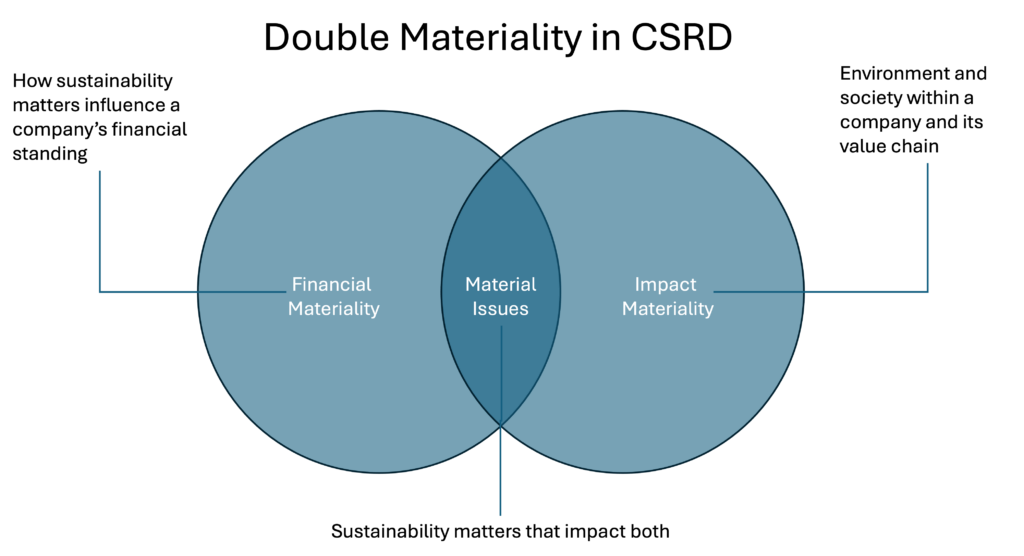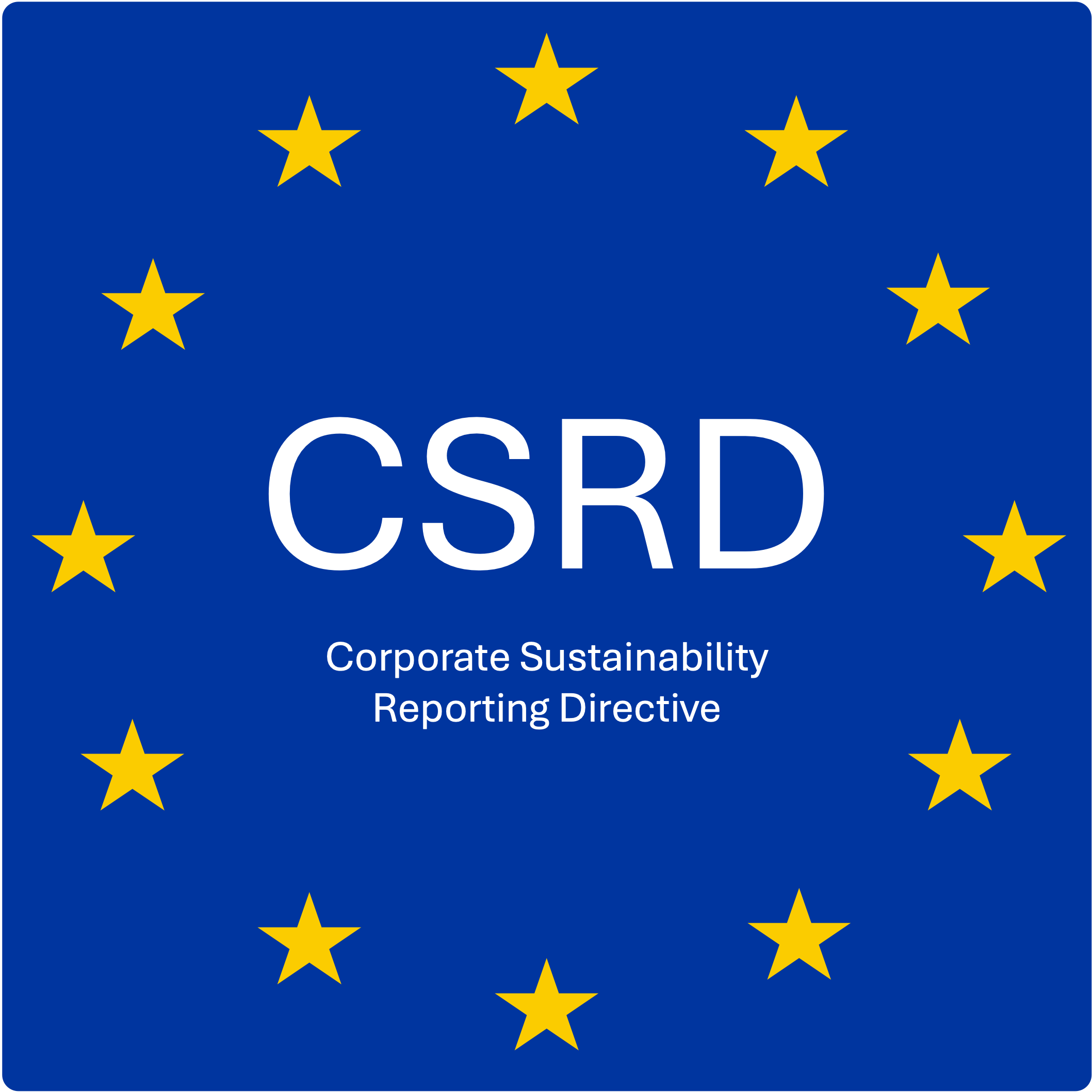Emerging ESG Reporting Regulations – Preparing for Compliance
In an era where environmental, social, and governance (ESG) considerations are no longer optional, organisations face a transformative challenge: the need for transparency. As regulations tighten globally, companies must rethink how they measure, report, and manage their ESG impact. One regulation in particular, the Corporate Sustainability Reporting Directive (CSRD), adopted by the European Union, is poised to reshape the way organisations approach sustainability reporting. Understanding its implications and preparing effectively is crucial for staying ahead in this evolving landscape.
What is the CSRD, and Why Does It Matter?
Adopted by the European Union in December 2022, the CSRD builds on earlier sustainability frameworks to create a more robust and standardised approach to ESG reporting. It introduces the European Sustainability Reporting Standards (ESRS), which require organisations to disclose detailed information about their:
- Environmental Impact: Reporting on Scope 1, 2, and 3 Greenhouse Gas (GHG) emissions, including emissions reduction targets.
- Social Contributions: Impacts on communities, workers, and consumers.
- Governance Practices: Corporate governance systems, risks, and performance.
The CSRD also establishes the concept of double materiality, which evaluates both the financial impact of sustainability issues on the organisation and the organisation’s impact on society and the environment. The diagram below illustrates this concept:

The CSRD expands the scope of reporting to include a wide range of companies operating within the EU, as well as those engaged indirectly through global value chains. It is estimated that more than 50,000 companies will be affected, making this one of the most impactful ESG regulations to date. For official details, refer to the European Commission’s CSRD Directive overview.
Challenges of Compliance
The CSRD’s mandatory, audited, and public reporting requirements introduce significant challenges for businesses:
- Data Collection and Integration: Companies need to gather and consolidate more detailed environmental, social, and governance data than ever before.
- Audit and Verification: Independent auditing of ESG reports demands precision and robust data governance practices.
- Timelines: Certain organisations must begin data collection from January 2024, with the first reports due in 2025.
- Global Implications: Companies outside the EU may need to align with CSRD requirements to meet trading partner or investor expectations.
CSRD Timelines and Key Requirements
The CSRD reporting guidelines vary by company type, with tailored requirements and deadlines. Key aspects include:
- Reporting Standards: Companies must follow the ESRS framework, which provides detailed requirements for sustainability disclosures.
- Scope of Emissions: Reporting must cover Scope 1 (direct emissions), Scope 2 (indirect emissions from energy), and Scope 3 (all other indirect emissions, such as those in the supply chain).
- Public Disclosure: Reports must be submitted digitally, made publicly available, and subjected to independent certification.
- Stakeholder Focus: Beyond compliance, reports aim to address the interests of investors, consumers, and regulators by providing transparent insights into sustainability efforts.
For further details on the CSRD timelines and guidelines, consult the official European Commission resource.
Preparing for CSRD Compliance
To navigate the CSRD effectively, organisations should take the following steps:
- Evaluate Applicability: Understand whether your organisation is directly or indirectly affected by CSRD requirements.
- Adopt Digital Solutions: Implement systems that streamline the collection, integration, and analysis of ESG data.
- Ensure Data Governance: Establish workflows and audit trails to maintain transparency and accuracy.
- Align with Global Standards: Even if not required, adopting CSRD-aligned practices can enhance reputation and build trust.
- Prepare for Audits: Use prebuilt reporting templates and frameworks to simplify compliance processes.
The Global Context
The CSRD’s impact mirrors that of the General Data Protection Regulation (GDPR) in elevating global standards. Beyond the EU:
- United States: Climate-related financial disclosures are being advanced under new regulatory initiatives.
- United Kingdom: ESG reporting rules now apply to financial firms and other sectors.
These developments demonstrate a worldwide shift towards harmonising ESG reporting expectations, highlighting the need for organisations to adapt.
The Role of Technology in ESG Reporting
Technology is a cornerstone for managing the complexities of ESG reporting. Digital tools can:
- Centralise Data: Integrate data from diverse sources to create a unified ESG data estate.
- Automate Reporting: Streamline processes such as measurement, reporting, and verification (MRV).
- Enable Goal Tracking: Align ESG efforts with recognised frameworks, such as the Science Based Targets initiative (SBTi).
- Enhance Transparency: Provide stakeholders with clear, accessible insights into sustainability progress.
AI and Compliance with the EU AI Act
As companies increasingly leverage Artificial Intelligence (AI) to streamline ESG reporting under CSRD, they must also ensure compliance with the EU AI Act. This regulation sets stringent requirements for AI systems used in high-risk applications, including automated ESG assessments and reporting.
Companies integrating AI-driven analytics, predictive modeling, or automated reporting tools should ensure their solutions adhere to principles of:
- Transparency
- Fairness
- Accountability
Non-compliance with the EU AI Act could result in significant penalties, adding another layer of responsibility to CSRD compliance efforts. Organisations should conduct thorough assessments of AI solutions used in ESG reporting to mitigate risks and align with regulatory frameworks.
For official AI Act guidelines, refer to the European Commission’s AI Regulation Page.
The Road Ahead
The CSRD represents a significant step towards greater accountability and transparency in corporate sustainability. By embracing this regulation, organisations not only ensure compliance but also build resilience in a rapidly evolving market. The benefits extend beyond regulatory obligations—companies that prioritise sustainability can enhance their brand reputation, attract environmentally conscious investors, and foster trust among stakeholders.
In a world where ESG considerations are becoming a competitive differentiator, proactive preparation for emerging regulations like the CSRD is not just a necessity; it is an opportunity to lead. By leveraging technology, fostering collaboration, and committing to transparency, organisations can navigate these changes and contribute meaningfully to a sustainable future.
Curious to learn more? Explore how advanced ESG solutions can simplify your compliance journey and unlock new opportunities for your organisation. Let’s take the first step together towards a more sustainable future.
Contact us today to begin your transformation.

